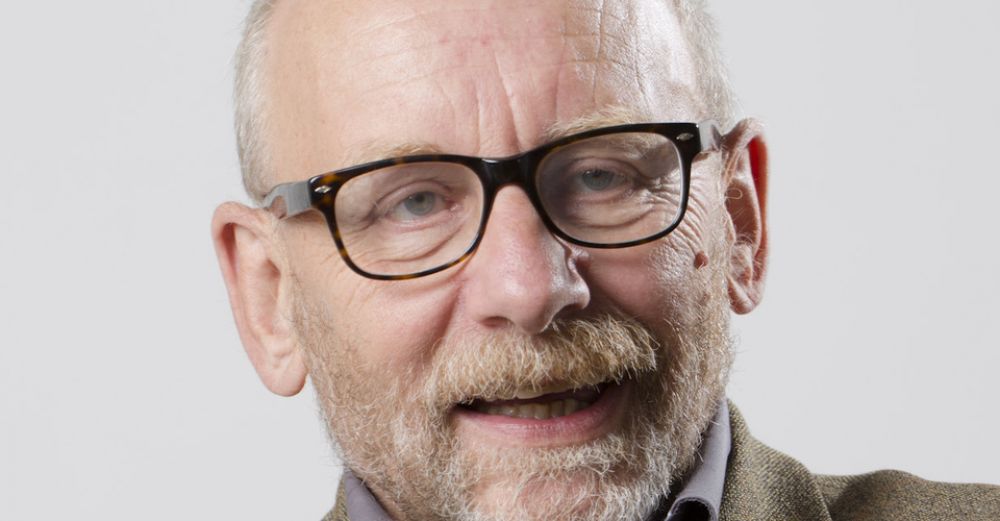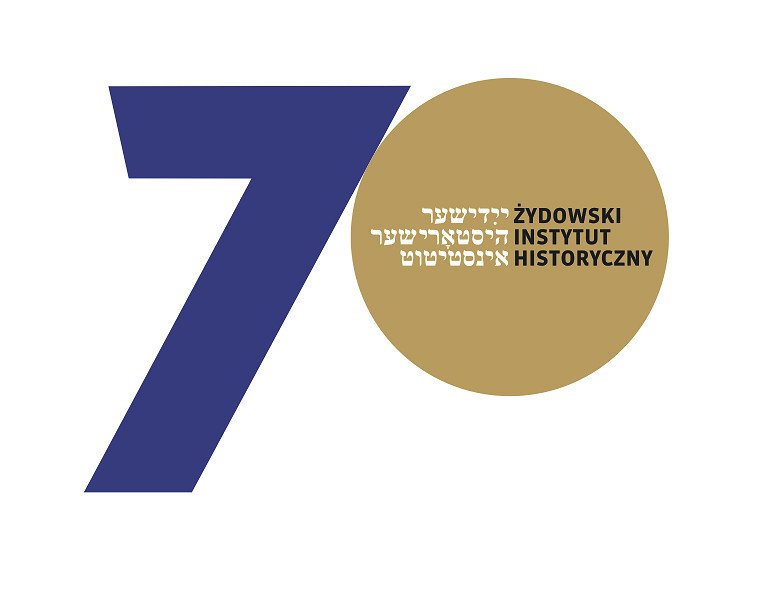- News
- Events
- Oneg Shabbat
- Collections
- Research
- Exhibitions
- Education
- Publishing Department
- Genealogy
- About the Institute
- Bookstore


According to the minutes from the 79th session of the executive committee of the Central Committee of Polish Jews, the Jewish Historical Institute was founded on 1 October 1947. But in fact, it started operating 3 years before that date.

The Central Jewish Historical Commission in Poland affiliated with the Central Committee of Polish Jews had branches all around Poland. The Krakow branch led by Michał Borwicz is worth mentioning. The Commission undertook one great and utterly extraordinary task — in summer 1944 it began collecting testimonies na documents reporting on the extermination of Jews in Poland. They served as the basis for the work of the Central Jewish Historical Commission which was transformed into the Jewish Historical Institute based in Warsaw, 3/5 Tłomackie Street. Further research would be impossible had it not been for those testimonies. Today we still rely and build upon the efforts of that time. We don’t just use those materials. Together with the JHI Association we protect decaying sources. We perform preservation and digitisation works... The founding of the Jewish Historical Institute lifted the Central Jewish Historical Commission a step or two higher on the scale of importance. The Jewish Historical Institute took over all property, people and the methodology of the Commission’s work. Moreover, additional elements were introduced, e.g. the collection of the Central Jewish Library and the Jewish Society of the Nurture of Fine Arts was incorporated in 1947. So the Institute grouped together all institutions that engaged in the Jewish spiritual heritage in Poland on different levels.
What is the Jewish Historical Institute today?
The Jewish Historical Institute is founded on wartime documents, works of art and the library organised after the war. This is the identity of the Jewish Historical Institute. It hasn’t changed and I hope it will remain unchanged in two dimensions: the Jewish Historical Institute will remain a Jewish institution belonging to the Jewish world — the almost non-existent archipelago of different organisations related to Jewish tradition, which underwent a natural process of reduction; and it will continue to care for the legacy and to research the Holocaust and post-war history.
Two projects that are currently coming to their end are good examples of our work: publishing the full Ringelblum Archive as well as the documentation related to the Central Jewish Committee in Poland. These are two framing devices — in between, there are dozens of activities, books published, and projects undertaken. We make indexes, we register and describe all synagogues and still existing cemeteries. The scope of our activities is relatively wide.
But the Institute must have undergone changes throughout the years?
One difference is definitely important: after the war the Jewish Historical Institute was an institution operating for the Jewish world and the Jewish memory. Now we can see more interest in the subject of the Holocaust and the history of Polish Jews. I believe that after the war nations mourned separately. Jewish mourning wasn’t considered significantly different from similar experiences of other nations. Only now have we understood that the Holocaust was an absolutely unique phenomenon, incomparable with other acts of genocide. It was unique not just in the number of victims, but also in the shape of ideology backing it and killing methods used in death factories for the first time in the history of mankind. We know it now — people experience it much deeper. Tony Judt used to say that the crime against Jews, the Shoah, is a factor bringing today’s united Europe together. After the war the Jewish Historical Institute was almost the only educational institution with such a strong position. Now may European countries, the USA, Canada and Israel have museums of the Holocaust. Warsaw has the Polin museum. This change is very good. And there is an additional element. 70 years ago the JHI was a humble institution. It had no money. The JHI operating today is a serious intellectual-archival-librarian factory performing research and using state-of-the-art technologies to digitise its collection. It is a big and important institution.
The 70th anniversary of the JHI is also a celebration of the Association of JHI of Poland.
The Jewish Historical Institute existed since the 1950 as part of the Association of the JHI — when the Central Committee of Polish Jews was dissolved, employees and friends of the JHI established the Association. In 1994 the organisation was divided into the Jewish Historical Institute — a research institution — and the Association of the Jewish Historical Institute of Poland. Roles, tasks and property were also divided. According to the contract the Association lent its property to the JHI. The JHI cares for the collection and preserves it, but it is also responsible for educational and research activities. Moreover it keeps looking for funds, including national public funding, in order to broaden and digitise its collection. The most important element of our collaboration is the Oneg Szabat Program that involves working with the most valuable archival collection: the Underground Archive of the Warsaw Ghetto also known as the Ringelblum Archive. The program includes translating the Archive into Polish and English, as well as publishing it both in the form of a book and a digital repository — the Central Jewish Library. In October we will present a portal called Delet which is meant to support the dissemination of this valuable collection. In November a permanent exhibition will be opened at the premises of the Institute. It will present the authors of the Ghetto Archive, namely — the Oneg Shabbat group. This is another project performed in collaboration with the Association. We bear a treasure that the Unesco calls „The memory of the world” and we want this to be common knowledge. We want people to know that an archive of such importance is located in Poland, so that all people who find the Holocaust, the war and memory important can revisit it.
The Ringelblum Archive will be presented to the public for the first time?
Its elements, such as the milk can and boxes, were presented before during a number of exhibitions, e.g. in New York and at the Frankfurt Book Fair. But this exhibition will be a step forward. I find it important that the exhibition will be located here — at the building of the former Main Judaic Library and the Institute of Judaic Studies — and that everyone who’s interested will have the chance to visit. The exhibition is demanding because it’s difficult to show just typed or handwritten text. We didn’t want to create a show of sheets of paper. Finding the right concept took us a lot of time. This is the question: how do we show the Archive today? The most important thing about the Archive are its authors. We owe the very existence of the Archive to them and thanks to the Archive they are still here. Among the millions who perished, we will remember these people the most. Because most Jews died an anonymous death. We don’t know, we cannot recover the names of those murdered in Treblinka or Bełżec. So strange. It as if they disappeared underground.
The story of the Ghetto told by those who were inside becomes their story.
Yes, it is happening in the very difficult moments behind the walls. With hunger, typhus, and terror. Where people are sent to labor camps and cannot communicate with the outside world. And despite all that — they want to describe everything. Several books about the Warsaw Ghetto were published but the authors only had limited access to the Ringelblum Archive — they couldn’t use all material. Full publication of the Ringelblum Archive will enable new research studies. This is another important mission.
Who is this exhibition for?
This is not an exhibition for children or junior high-school youth because it requires at least some competence in the realm of history, language and geography. This is not an exhibition for experts or historians. I would love it to be an exhibition for the intelligentsia, for people interested in the subject, and for all those who want to learn about the Oneg Shabbat group and about the Archive it created, and through them — about the fate of Jews under German occupation. It should make the audience feel the miracle — as it was a miracle that those people found one another, created the Archive, managed to hide it and that it survived. After all, this Archive wasn’t meant to be. The Ghetto was destroyed. Only rubble remained. It is a miraculous story — the documents survived hidden in boxes and milk cans.
The JHI and the Association of the JHI of Poland announced the beginning of the Oneg Szabat Program on the 18 September 2017.
Oneg Szabat was the name of the group that created the Underground Archive of the Warsaw Ghetto. These two words, „Oneg Szabat” mean the joy the Sabbath, because they met on Saturdays — in the building where the JHI and the Association are located today — and they talked and prepared materials. This was their headquarters. They met on Saturdays because this was the only day free from other work. In our program we want to show that if we know anything about the Jews from the time and about the Jews of Warsaw, we owe it to them. There are many memoirs and testimonies from the Ghetto, but a significant part of that is the effect of the work of Oneg Szabat. They did something unbelievably important: their work added to the great indictment against the crime and the criminals. The Archive has many elements but, most importantly, its authors managed to record the war not jut through statistics, but mot of all through testimonies of people who used to live in the Ghetto. It is recorded in many ways: there are first names and last names, e.g. on postcards, in diaries and school essays. Thanks to Oneg Shabbat we are able to understand the feelings of those people; the way they experienced the surrounding reality and what was happening to them from 1940 on.
We have to talk about the Archive. It is not a Jewish issue — to have to remember about their own suffering. This unique fate has to be approached with great care. But also — let me sound trivial — even though the world is getting a little bit better, this situation keeps coming back.
What do you wish for the JHI and for yourself in the coming years?
I wish the JHI and the Association fruitful collaboration. Disseminating and passing along the legacy of Oneg Szabat is our obligation and a great mission. We have been trying to fulfil it from the very beginning of this institution and it will surely be our priority for years to come. I also hope that we will be able to open new exhibitions, conduct research like e.g. studies on the spirituality of Polish Jews, Yiddish culture and Jews from Warsaw. There are things that need to be done and people we want to work for. And we have a great team. It means a lot.
